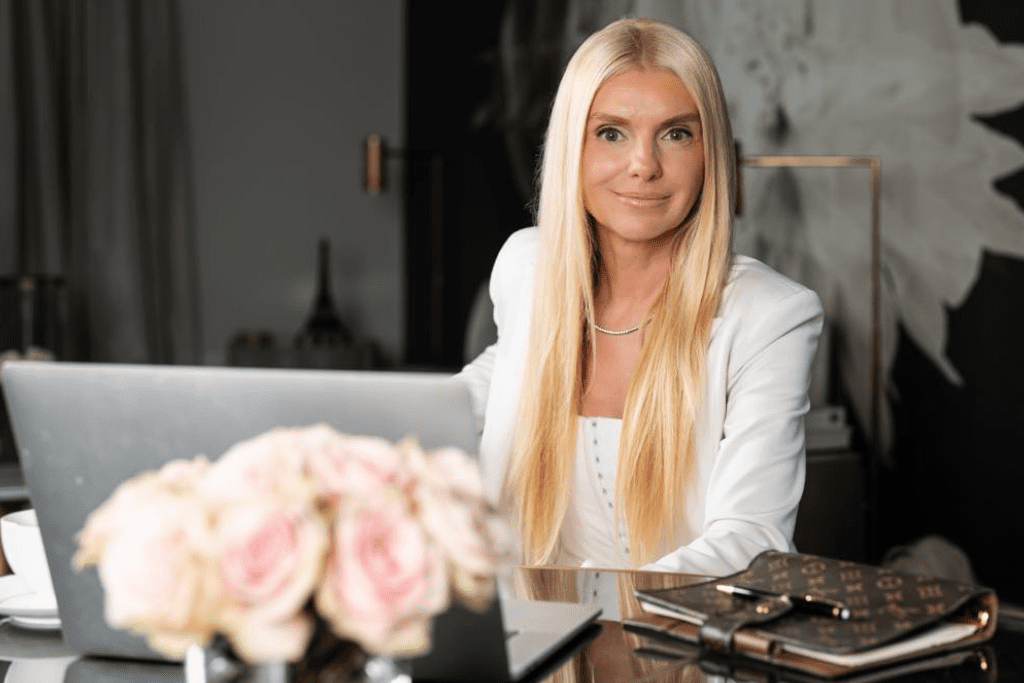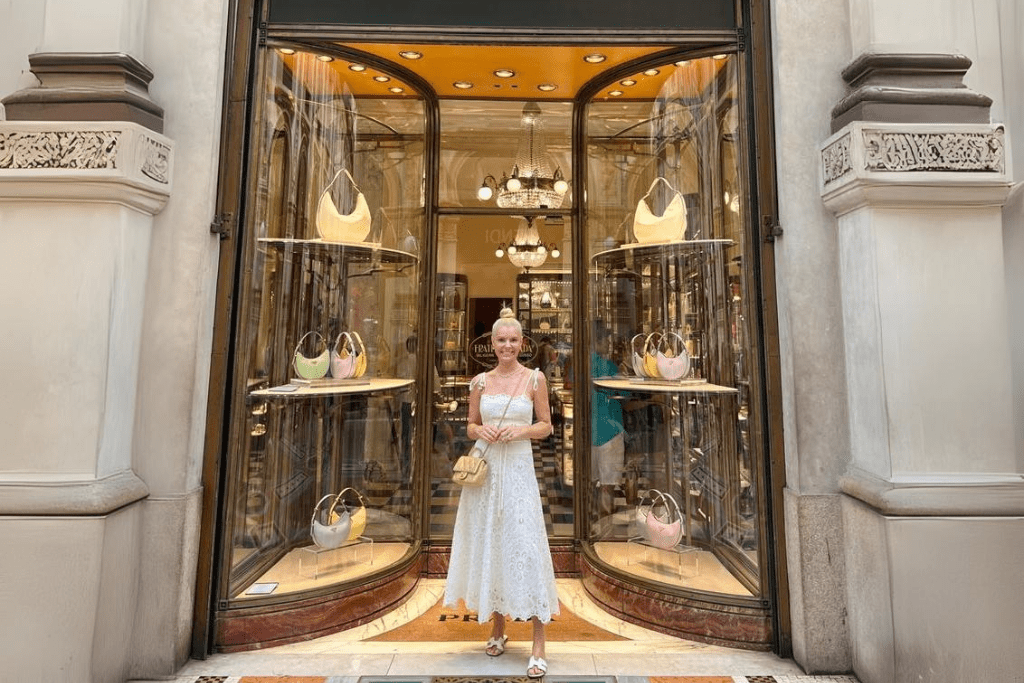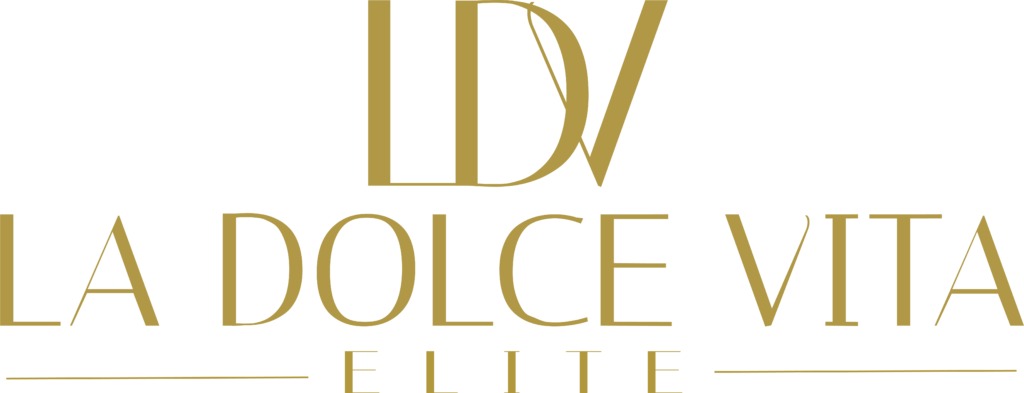Sean and I are in Milan. This city is synonymous with opulence, fashion, and a perfect blend of tradition and innovation. Many brands such as Gucci, Prada, Versace, and Dolce & Gabbana call Milan home.
What many people don’t realize is that most of these well known global brands started as small ateliers, boutiques and design studios.
An excellent example of a global Milan based luxury brand is Prada. Prada started as a small boutique that has passed its craftsmanship through generations and has expanded globally to become a family of highly desirable luxury brands.
There are 9 key elements to Prada’s success.
Learning and following these steps is one of the ways to position your business as a luxury brand.

Foundation. Prada’s legacy started in 1913 when the company was founded by Mario Prada. Prada began as a small operation, a leather goods shop in Milan, specializing in high-quality leather bags, trunks, and accessories.
The foundation for a luxury brand needs to be strong to allow you to innovate, scale and expand. The foundation involves getting your business model right from the very beginning. This includes your planning, systems, structures, culture, and customer service. Without a strong foundation many businesses fail to establish themselves as luxury brands and many of them actually fail completely.
Focus on Quality: From the beginning, Prada emphasized high-quality craftsmanship and exclusive materials. This commitment helped the brand build a reputation for excellence among Milan’s elite.
Real luxury is understanding quality. Building a luxury brand requires consistent investment in the quality of your products, services, customer relations and customer service.
Transition, fresh perspective and expansion. In 1978, Miuccia Prada, Mario’s daughter, took over the family business. With her academic background and PhD in political science combined with her experience in performing arts, Miuccia brought a needed fresh perspective to the business and brand.
Expansion of every business requires talent, strategy and forward thinking. Scaling up can often be the most challenging stage in a company’s evolution. Many companies hire outside advisors, seek outside investors and form a board of directors to help fund and guide them through this process.
Innovation and Diversification. Under Miuccia’s leadership, Prada began to innovate. She introduced new materials and launched the first nylon backpack and tote in 1985, which became iconic. In 1988 their ready-to-wear collection was launched.
The world of luxury evolves very quickly and in order for you to have a share of this demanding market you need to innovate and find new solutions to your clients changing needs, desires and lifestyles.
Brand Positioning. Prada positioned itself as a symbol of understated elegance and sophistication, appealing to a discerning clientele who valued subtlety over ostentation.
The biggest mistake many brands make is they try to talk to everyone and serve all clients. You need to know and understand your target clients intimately to consistently attract them with your market focus and positioning.

Global expansion. In the mid-1990’s Prada expanded internationally, opening flagship stores in fashion capitals such as New York, Paris, London, and Tokyo. Each boutique was designed to reflect the brand’s luxurious yet minimalist aesthetic.
Brand expansion is mastering all aspects of your operations at your first location and repeating the well established model as you expand. The brand look and feel and the client experience need to be consistent everywhere, whether a customer is visiting your location in NYC, Paris or Milan.
Acquisitions and New Lines. Prada acquired other brands such as Jil Sander, Helmut Lang, and Church’s, and launched the more youthful and experimental line, Miu Miu, in 1992.
Many brands choose to launch more affordable products and services to attract the younger generation. This strategy is well established and allows the brand to build relationships with their clients early on and allow them to uplevel to the more premium-priced brands over time.
Sustainability: Prada has embraced technology and sustainability, incorporating innovative materials and sustainable practices into their production processes.
Luxury brands choose sustainability for many reasons: as many climate conscious customer groups demand this of their luxury products, in addition to brand image and message, market differentiation, and innovation and quality.
Cultural Influence: Prada’s influence extends beyond fashion into art and culture. The brand collaborates with artists and architects and sponsors a wide range of cultural initiatives around the world, further cementing its status as a cultural icon.
Identification as both sponsors of art and culture and thought leaders who create and influence art and cultural trends enhances a luxury brand’s image as a fashion innovator.
Prada’s ability to create and innovate while preserving its traditional craftsmanship and quality has ensured its continued success and prominence in the luxury fashion industry. Its history and record of success are worth studying for those that wish to build their own luxury brand over time in the increasingly crowded luxury space.
If you are ready to build or uplevel your own luxury business, apply for your Luxury Business Strategy Session.
ABOUT THE AUTHOR:
Renia M. Orr – a business coach, brand strategist and the owner of LDVElite.com with over 30 years of experience in the luxury market. Her purpose is to help business owners build highly profitable businesses and inspire personal growth.
She is a speaker for Fortune 500 companies, appearing on NBC TV and other television programming. Renia was born and educated in Warsaw Poland where she received her MBA in Management. She now lives in Palm Beach with her husband Sean and a beautiful Havanese, Dolce.


